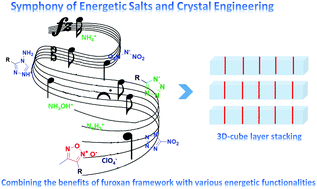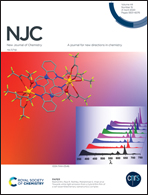Combining the furoxanylhydrazone framework with various energetic functionalities to prepare new insensitive energetic materials with 3D-cube layer stacking†
Abstract
A series of furoxanylhydrazone-derived energetic compounds including salts and neutral compounds were systematically studied using 3-methyl-4-furoxancarbaldehyde as a versatile starting material. Target compounds present a 3D-cube layer crystal packing style due to the special structure of furoxanylhydrazone and vast hydrogen bonds. This configuration breaks through the limitation of the 2D-plane layer structure. Target compounds, which feature such characteristics, exhibit excellent sensitivities toward impact and friction (IS > 24 J; FS > 180 N) and acceptable energetic performance. Moreover, the detonation velocities and pressures of all ionic compounds (6–9, 11–13) were both increased relative to their corresponding neutral compounds. Compared with 5-(3′-methylfuroxanyl)methyleneamino-tetrazole (10), the sensitivities to impact and friction of its anion salts (11–13) were also lowered to some extent. The structure–property relationship was studied using theoretical calculations, crystal structure analysis and energetic properties. It is noted that five types of crystal packing have been analyzed, which may be useful for the further understanding of crystal and chemical phenomena in energetic materials. The results obtained demonstrate that this study enriches future prospects for the design of energetic materials.



 Please wait while we load your content...
Please wait while we load your content...